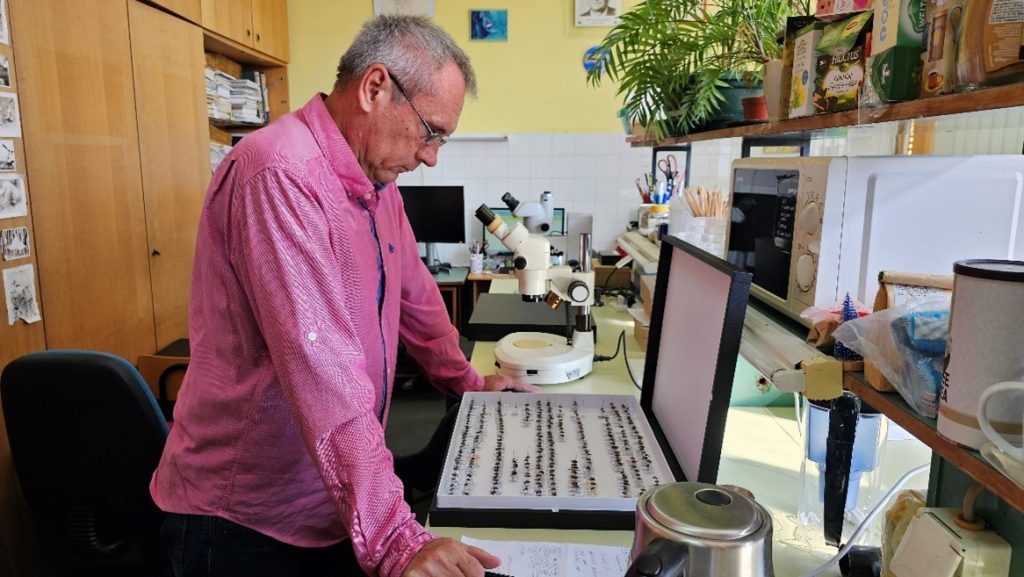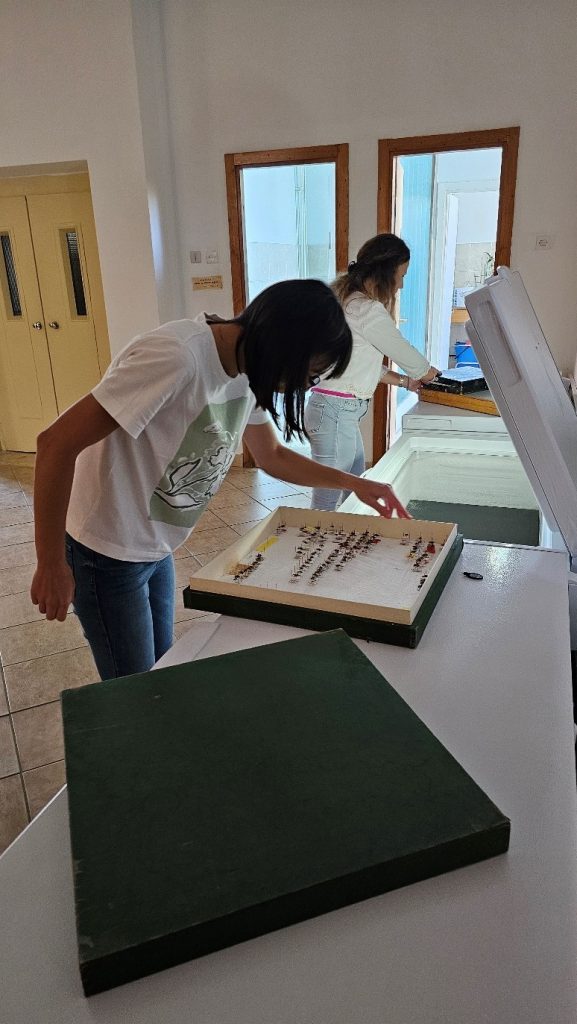On January 1st, Balkan PolliS was launched as 1 of 12 projects under TETTRIs cascade funding, with a mission to co-create solutions that drive transformative change in taxonomy.
Supported by €189,900 in funding, the project has a clear mission: increasing the taxonomic knowledge of hoverfly and wild bee biodiversity in the Balkan Peninsula.
Pollinators and the Balkan Peninsula
The Mediterranean Basin is one of the world’s top biodiversity hotspots, home to a wide variety of plant and animal species, many of which cannot be found anywhere else. The Balkan Peninsula is particularly notable for its rich diversity of pollinators, with an estimated 658 hoverfly species and 1,397 wild bee species.
These insects play a vital role in ecosystems and agriculture by pollinating flowering plants, a key process for producing fruits, seeds, and vegetables. Protecting them is therefore essential to sustaining biodiversity and supporting healthy ecosystems. However, a significant challenge remains: many of these species are poorly identified, and the lack of organised, published data hinders effective monitoring and conservation efforts.
About Balkan PolliS
Balkan Pollis is on a mission to transform our understanding of hoverfly and wild bee biodiversity in the Mediterranean Basin, particularly in the Balkan Peninsula.
The project is compiling and providing digital indexes for a wide range of these species using data from nine collections across Serbia, Greece, Slovenia, and Montenegro, including a comprehensive dataset that documents 618 hoverfly species and over 938 wild bee species. These digital indexes will serve as centralised databases that organise and standardise taxonomic information, facilitating species identification, helping rack biodiversity changes, and supporting research and public education.
To address the challenge of “cryptic taxa”—species that are very similar in appearance but genetically distinct—which complicates accurate species identification, the project will incorporate molecular tools such as DNA barcoding to allow precise differentiation at the species level.

In addition to creating these indexes, the project will also provide taxonomic information and photographs of all hoverfly species from a regional reference collection.
This wealth of data will not only improve access to taxonomic information but will also contribute to a network of national reference collections. Ultimately, the project aims to facilitate future monitoring of pollinator populations in the European Union, which is crucial for understanding and protecting biodiversity and ecosystem health.

“This project is unique because it fills crucial gaps in hoverfly and bee identification knowledge, offering essential tools for recognising pollinator species in one of Europe’s key biodiversity hotspots.”, explains Ante Vujic Project coordinator. “This initiative is the chance to build a framework for pollinator monitoring across the EU and the collaboration between the key institutions for pollinator survey in the region. This work will not only advance scientific knowledge but also play a vital role in supporting conservation efforts throughout Europe.”
The Balkan PolliS team
Balkan PolliS is led by the (UNSPMF) and supported by the University of the Aegean (UAegean), the Slovenian Forestry Institute (SFI), and the Natural History Museum of Montenegro (NHM). The project also relies on collaboration with key experts across several fields.
- UNSPMF, based in Serbia, is leading the project, focused on improving taxonomic understanding of hoverflies and wild bees in the Mediterranean. The team is establishing a network for collaboration and overseeing the digitization of reference collections. They are also creating a digital infrastructure for species identification and developing a DNA barcode reference library to help distinguish closely related species.
- UAegean, based in Greece, are leveraging data from the Melissotheque of the Aegean, which includes a systematic collection of bees and hoverflies. Their work involves aggregating this data and collaborating on database management while contributing expertise in species identification and ecology.
- SFI, based in Slovenia, is responsible for coordinating the national pollinator database and digitizing its insect collection. This effort is crucial for accurately documenting local pollinator biodiversity and making the data accessible for research and conservation.
- NHM, based in Montenegro, is contributing by enhancing its hoverfly reference collection. The team is focused on digitizing newly identified specimens and preparing a physical collection to support future research and conservation efforts.
The project’s current achievements
Since the launch of Balkan PolliS, the project has established the foundation for digital indexes for hoverfly and bee species which will be provided for nine (sub)collections. Three of these subcollections will contain basic species data while while six others will offer more comprehensive data on species and their characteristics, including the European reference subcollections for the two largest European hoverfly genera (Merodon and Cheilosia). These frameworks are being developed to align with the standards set by the Global Biodiversity Information Facility (GBIF), facilitating seamless data sharing and broad dissemination of biodiversity information.
Additionally, the team has begun preparing reference subcollections for Balkan hoverflies and European species within the genera Merodon and Cheilosia, as well as national reference collections for bees and hoverflies.
What’s next for Balkan PolliS?
In the coming months, the project will continue to expand and validate reference collection by integrating additional records from the reference subcollections. A key focus will be on ensuring that all new data aligns with GBIF standards. Ultimately, this will contribute to the completion of comprehensive reference collections for hoverflies and bees, making them accessible to researchers, conservationists, and citizen scientists.

Stay tuned
Keep up with Balkan Pollis work by following their Instagram account @BalkanPollis.

